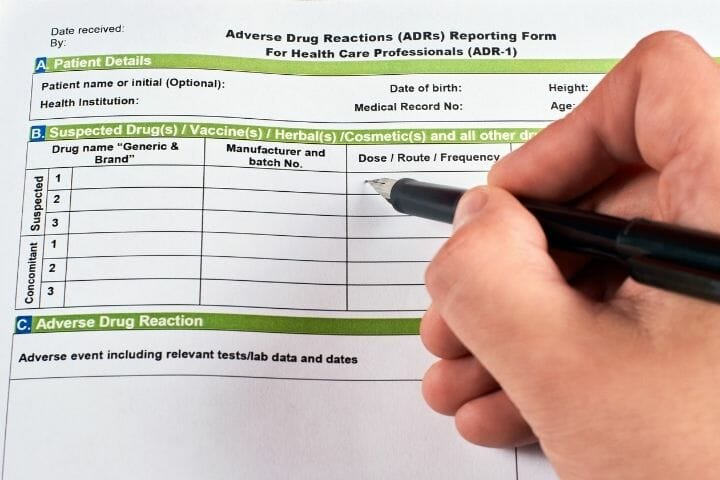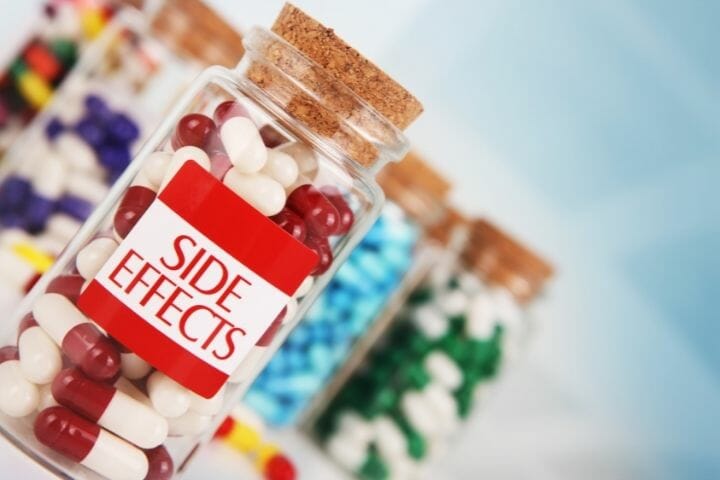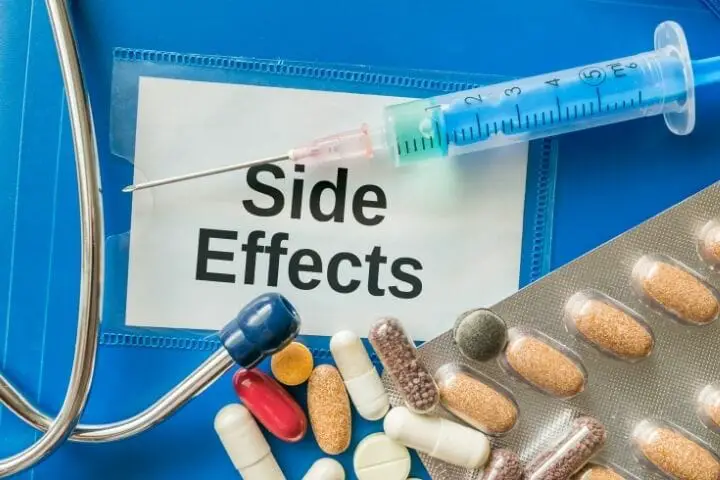What is MedWatch? A lot of people are unaware of this important consumer-facing adverse medication recording tool, which can help save many lives. We answer some of your questions below.
Contents
A collection of information on adverse medication reactions and other occurrences is maintained by the FDA’s “Safety Information and Adverse Event Reporting Program,” often known as MedWatch.
Given that it is a component of the FDA’s Adverse Event Reporting System, it has the ability to interact with the organization (FAERS or AERS). If an unfavorable circumstance emerges or if a sentinel event occurs, you must alert the appropriate authorities immediately.

One method through which medical professionals and members of the general public may exchange this kind of information is via the voluntary reporting system, which was established in 1993.
It is feasible for experts to make use of the system’s online analytical tools and databases, which are available to anybody with an internet connection. In addition to its website, MedWatch’s social media pages provide information about medical recalls and other clinical safety warnings.
You might like to read: How Do Medicare Advantage Plans Work?
History
In 1993, an organization known as MedWatch was established with the goal of gathering information about medical-related incidents and practices. In the medical community, adverse events (AEs) are undesirable side effects that occur as a consequence of using a medicine.
Examples include the Food and Drug Administration’s (FDA) database of reports of adverse reactions and product quality concerns, which contains information on both pharmaceuticals and medical devices (such as dietary supplements, cosmetics, medical foods, and infant formulas).
In the United States, medical professionals and individuals may report serious difficulties they believe are associated with the prescription, distribution, or use of medicinal goods via an FDA program known as “MedWatch.” These reports, as well as any future investigations, may aid in the discovery of potentially dangerous safety flaws.
Take, for example, the theft of roughly 100,000 vials of long-acting insulin Levemir, which may have been incorrectly stored or handled in the first place. It is possible that patient safety was threatened as a consequence of this.
After learning about a diabetic patient who had had a serious adverse reaction as a result of poor blood glucose management, the FDA and the drug’s manufacturer investigated and found that stolen Levemir was being sold. They then issued a public warning regarding the drug’s use.

The MedWatch Report
Is one report all it takes to change the world? The FDA received a complaint from a family member of a patient with multiple sclerosis who had heart failure after receiving a modest dosage of Novantrone. Lower dosages of Novantrone encouraged the FDA to further evaluate the possibility for cardiotoxicity, which resulted in new recommendations for tighter monitoring of cardiac function in patients receiving the medicine.
Medical items other than medications may also benefit from reporting, which can lead to early detection of issues. A company’s drug-eluting coronary implants were installed in patients who were intended to be given the same kind of bare-metal stents and vice versa.
Part of the Liberte trade name was shared by both stents, increasing the likelihood of a mix-up. Because of this, FDA and the manufacturer collaborated to rebrand Liberte as VeriFLEX in order to make it easier for doctors and patients to tell them apart.
There is no guarantee that a medical product is the cause of an adverse event reported to MedWatch. This may need the conduct of a formal epidemiologic investigation or a randomized clinical trial.
Medical product safety depends in large part on MedWatch reports, which alert FDA to potential concerns in real-time. The MedWatch system relies on your support, and the FDA can’t function without it. The following are examples of the kind of reports we want from you:
A potentially life-threatening reaction to a medication, biologic, medical device, nutritional supplement, or cosmetic product that may be caused by any of these substances. To our knowledge, there have been no reported cases of major adverse effects that were not included in the product labeling. Deaths, hospitalizations, and other medically important occurrences are all considered “serious.”
A therapeutic failure is one in which the medicine or device does not perform as expected (e.g., if a patient has to switch from one brand of a drug to another because the original one was ineffective). If the mistake was made as a result of unclear product names, instructions, or packaging, this is a possibility.

How To Report?
Filling out and submitting the optional form is a simple and uncomplicated process. However, sometimes the process of reporting can be a bit complex because of the use of technical terms. For example, When terminology like “dose frequency,” “medical route,” and “event abated” are used, they are superfluous and might be confusing to individuals who are not acquainted with them.
In order to compensate for the lack of information, the forms are brief, and the user interface is straightforward. It might take anywhere from 10 minutes to twenty minutes to complete the form, depending on how much information the user wants to provide.
Medical warnings, prescription recalls, and drug labeling changes can all be found in MedWatch’s Drug Information section, which can be accessed via email, RSS, or the What’s New section of the website.
MedWatch’s Drug Information section can also be accessed through the What’s New section of the website. Because of the meticulous organization of the Drug Labeling part, changes to the area may be monitored month by month, all the way back to 2002.
Updated prescription information, as well as the specific label region that has undergone modifications, may be found on the Labeling Changes website, which is easily accessible. By clicking on the drug’s name, you can learn more about its warnings and contraindications in more detail. The material is delivered in a straightforward and easily comprehensible way.
Thus, using MedWatch, medical professionals and patients may report major problems they’ve encountered with drugs or medical devices that they’ve prescribed, distributed, or are presently using. It is also possible to send or fax the MedWatch 3500 form (which is a PDF file) in addition to submitting it online, over the phone, or via the mail.

The Role of MedWatch in Healthcare
Healthcare is one of the most precious services on the planet – one cannot place a monetary value on one’s health and well-being. By utilizing the appropriate metrics from the appropriate sources and knowing how to turn knowledge into action, one may enhance the lives of your employees and patients while also gaining the capacity to adapt to continual change in any organization.
Techniques for diagnosing and treating diseases
Hospital analytics and reports allow companies to combine clinical, financial, and operational data to assess the effectiveness of their different procedures, the health of their patients, and the productivity of their healthcare programs.
By having access to these insights, a healthcare institution may determine which procedures aren’t producing the intended results, which processes need to be improved, and which programs need to be improved to minimize readmission statistics.
Management as a preventative measure
Undoubtedly, one of the most impressive aspects of healthcare reporting and analytics is the capacity to harness the power of past and present data to identify potentially deadly medical conditions in patients before they manifest themselves.
Using this area of predictive analytics in the healthcare industry, we can improve the overall quality of patient treatment while simultaneously lowering death rates.
Cutting down on wasteful expenditures
Healthcare reports may also help healthcare organizations become considerably more cost-effective in their operations. In addition, data analysts can assist medical institutions in streamlining their budgeting processes and make alterations or substitutions based on safety, ethics, and trust by collecting and analyzing operational metrics associated with their daily healthcare expenditure in all primary areas from catering to patient medicine.
Patient satisfaction and well-being
Data from healthcare reports can aid hospitals in providing information to patients on an individual basis. A healthcare institution may then provide their patients with personalized recommendations on maintaining a healthy lifestyle based on their medical data and biometric vitals.
Not only is this invaluable in terms of offering higher levels of patient aftercare, but it is also a significant step forward in terms of lowering readmission rates.
Controlling Diseases
Also, utilizing a mix of past and present metrics or insights, healthcare reports may assist place surveillance on future large-scale disease outbreaks, ensuring that the necessary course of action or preventative steps is made to manage or limit the issue.
Criticisms of the Current MedWatch System
- While research analyzing the causes for underreporting may be valuable for increasing the amount of drug reaction information available, it is unclear if they truly represent the reasons for underreporting in the United States and other countries.
- According to some theories, study outcomes are highly associated with the questions put up, which means that the results of MedWatch might be self-serving and biased.
- Importantly, this research should not be construed as the final word on the causes of underreporting or on potential remedies to the problem.
- Response rates that are less than ideal frequently raise doubts about the sample, and one cannot help but wonder if there is a link between the chance of responding to a survey and the likelihood of reporting spontaneously. The first thing that stands out about some of polls is that their results do not appear to be comparable to the results of other polls done across different countries.

How Can MedWatch Be Improved?
The following ideas can improve MedWatch:
- More patients can be enrolled.
- Patients with complex medical issues should be included.
- Patients who are taking specific medications at the same time
- Including children and the elderly
- Extending trials to months is necessary because they are frequently just for a few weeks.
- Because of long-term usage or hidden effects, it is challenging to identify responses in a short period.
- The process of making essential adjustments to a medicine’s label to better clarify how the medication should be used.
- Having an impact on how a patient who has received the product should be monitored.
- MedWatch should issue FDA-issued product recalls, safety warnings, corrections, and safety notices.
- Dietary supplements and foods, such as vitamins and minerals; herbal medicines; infant formulae; and medical foods, such as those that are designated for persons who have a particular ailment or condition.
You might like to read: How To Win A Medicare Appeal
The Future of MedWatch
The MedWatch program has two parts: receiving and transmitting safety information. The first stage seeks and accepts voluntary reports of major adverse events and product quality issues to the Food and Drug Administration.
Because nurses are on the front lines of patient care, they are best placed on recognizing and reporting incidents—additional statutory reporting requirements for user facilities and makers of medical equipment, biologics, and pharmaceuticals.
Library staff, consumer organizations, patient advocacy groups, health professional associations, and schools of medicine, pharmacy, and nursing contribute to this endeavor, which the FDA is coordinating. Recently, FDA Commissioner Margaret Hamburg also launched a new version of the FDA’s Voice Blog.
A new web-based learning tool, MedWatchLearn, has also been created by the Food and Drug Administration. This tool has been developed to educate students, healthcare professionals, and customers on how to complete a report correctly.
The MedWatchLearn website also has samples of a quality report, which contains crucial information that may be used to assist the FDA in evaluating an occurrence or a product quality complaint. A consumer notice describing how and when to utilize the new consumer reporting form was released in conjunction with the announcement of these new materials.

Bottom Line
Federal regulators acknowledge that consumer reports are valuable. For example, their actions contributed to the countrywide recall of a batch of pre-filled syringes of testosterone. According to consumer reports received by the FDA, men applying testosterone gel to their upper arms and shoulders were unintentionally exposing and potentially hurting themselves.
In response to the concerns, more robust product warning labels were developed to notify the public and encourage the use of protective clothing after applying the gel to prevent the gel from contaminating others.
We hope this article has given you insight into a robust yet accessible method to help prevent medical tragedies in the country. We should all come together as a community to ensure that MedWatch is utilized to the best extent possible to ensure that warning signs of problematic medicines and medicinal procedures are recorded and action taken quickly.
If you liked the content here, please do not forget to share it with others who may also like to understand MedWatch and its purpose.
